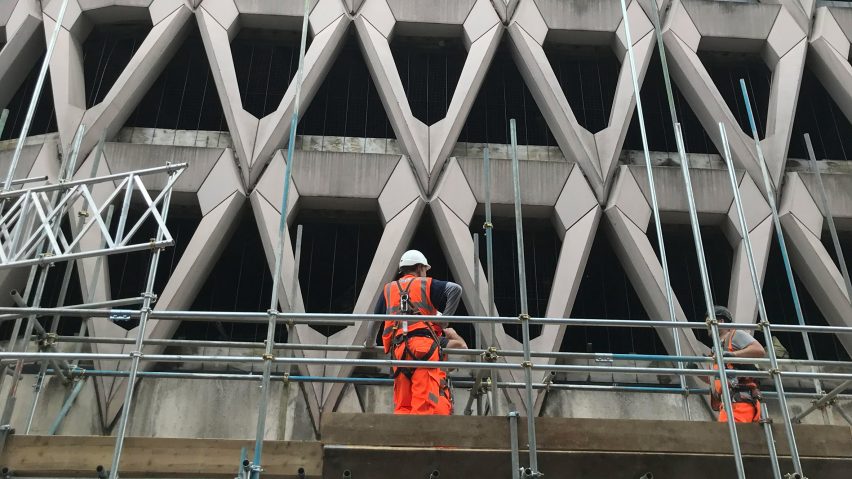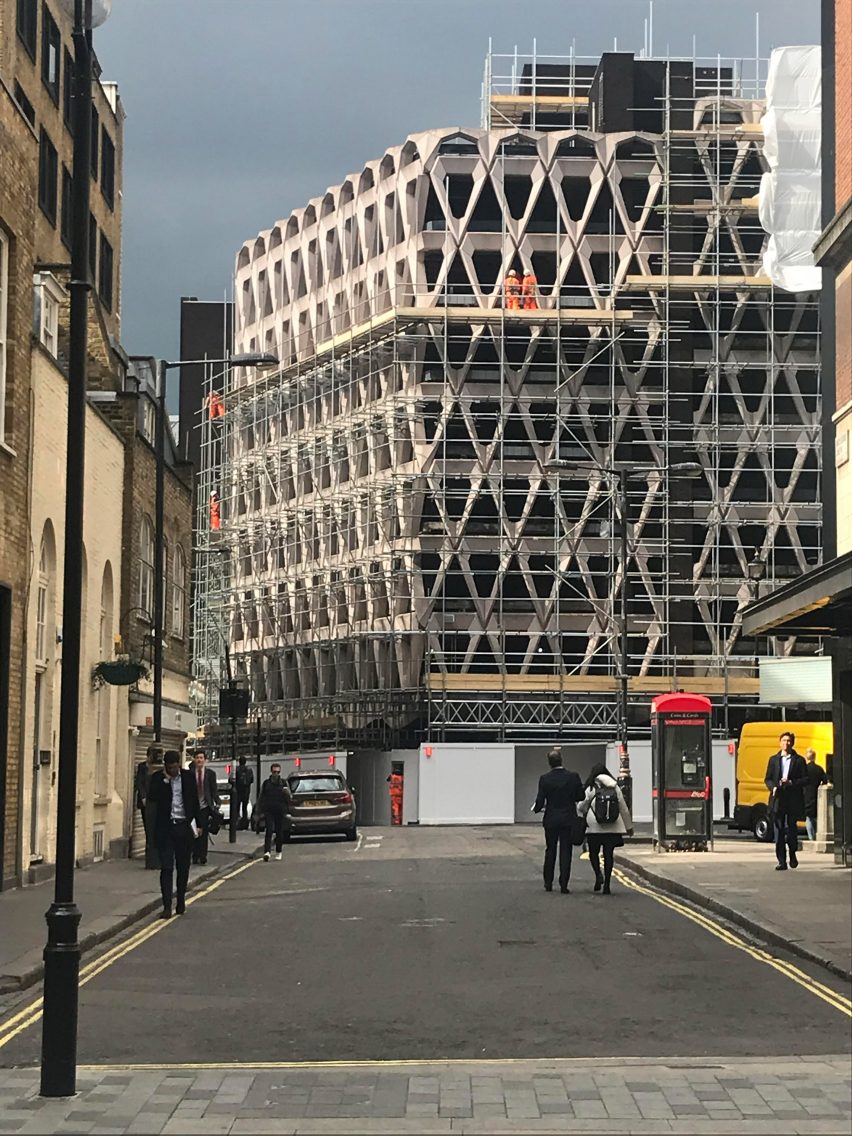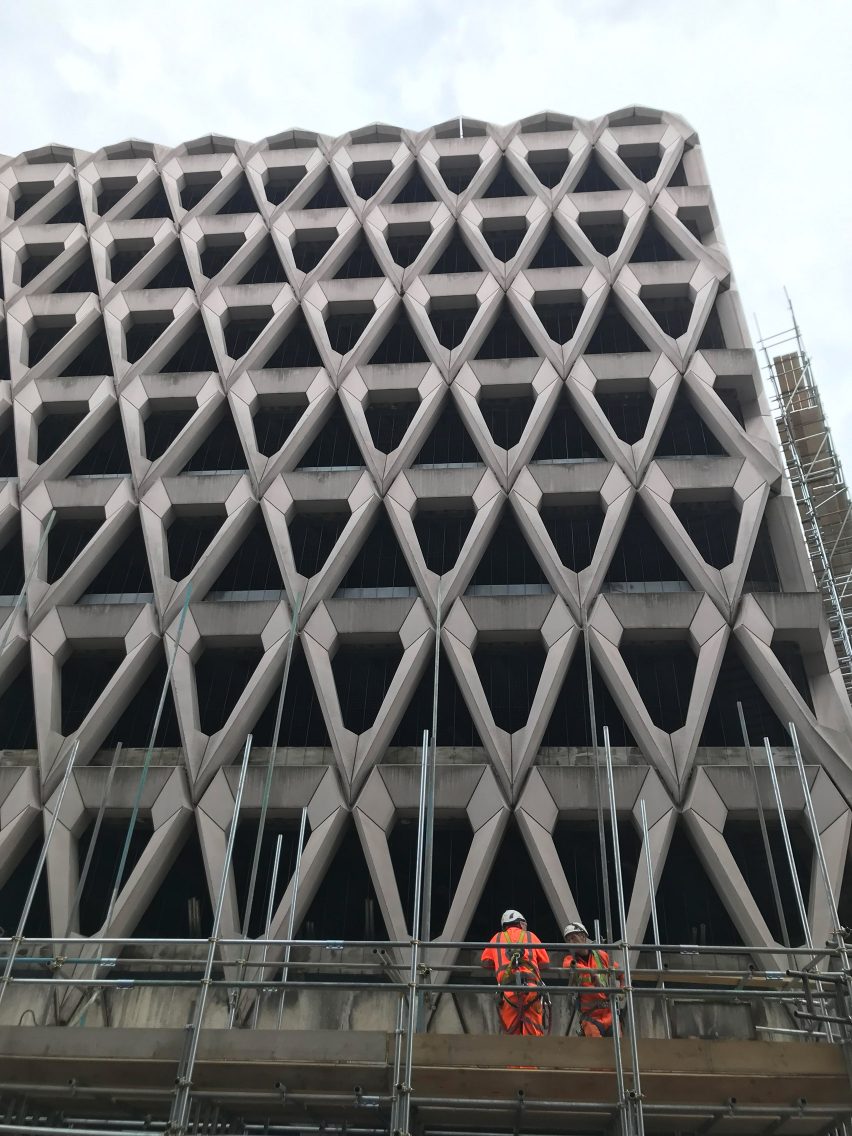
Architects grieve as demolition starts on "design icon" Welbeck Street car park
Architects have been lamenting the loss of the Welbeck Street car park in London, as works starts to replace the brutalist building with a new hotel.
Scaffolding has been installed around the distinctive triangular concrete facade of the structure, built in 1970 by Michael Blampied & Partners, as builders prepare for demolition to start.
Many figures from the architecture and design world expressed their sadness about the demolition in response to photos posted on Instagram by Dezeen editor-in-chief Marcus Fairs.
"We should be ashamed. This is a significant work," wrote Henley Halebrown cofounder Simon Henley.
DH Liberty director Dara Huang described the situation as "soooo sad", while British architect Peter Barber called it "sad" and Claesson Koivisto Rune founder Eero Koivisto said it was "stupidity".
Architectural photography duo Hufton + Crow suggested the facade could be dismantled and relocated. "It should be rebuilt somewhere else," they suggested.
"Radical conservation" needed
Architect Sam Jacob told Dezeen the loss of the car park was "such a sad thing".
"It's a building that expresses a particular relationship between the city and the infrastructure that supports it, and should really be considered alongside other great pieces of transport architecture, like Gilbert Scott's St Pancras, Brunel's train sheds or Grand Central Station," he told Dezeen.
"Its expressive concrete cladding turned the prosaic act of stacking of cars into a remarkable urban form."

Jacob previously named Welbeck Street as one of the most important unsung buildings in the capital. He believes the car park could have been used for storing more sustainable forms of transport, such as bicycles.
"Imaginative and radical conservation could easily save structures like this instead of wholesale destruction," he said.
The multi-storey Welbeck Street car park was created to serve a department store but was rendered obsolete as central London became less car-orientated.
Preservation body the Twentieth Century Society led a campaign to save the building, but it was denied listed status by Historic England in 2016.
It was sold to Shiva Hotels for a reported £100 million and plans for its demolition were approved in 2017. It will be replaced by a 10-storey hotel designed by EPR Architects, the practice that was lead designer on club, hotel and dining venue The Ned.
Environmental cost to consider
"We are very upset to lose this building, which we consider to be a design icon," said Claire Price, head of casework for the Twentieth Century Society.
"At a time when climate change is so much in the public eye, we need to make more efforts to move away from the current short-termism approach and work harder to come up with more imaginative solutions that will allow us to adapt and retain these important buildings."
Best known for its striking geometric facade, the multi-storey car park was designed as split-level due to its sloping site.
Its upper levels are formed of triangular precast concrete modules, surrounding precast concrete beams and slabs topped with concrete poured in situ.

Architecture firm JAA released an alternative design suggesting that this structure could be converted into a hotel with the facade preserved.
However not everyone thinks the design is of architectural merit.
"Welbeck Street car park was not some lost masterpiece of brutalism, but a decent little precast patterned facade," said Owen Hatherley, author and Dezeen columnist.
"Its destruction isn't much of a tragedy for architecture in London as such, but it is for the areas around Oxford Street, where nothing except money and sandblasted fragments of heritage is allowed to exist,"
Several notable buildings from the same era as Welbeck Street car park have been demolished across the city recently, including Alison and Peter Smithson's Robin Hood Gardens.
Photography is by Marcus Fairs.